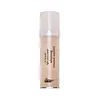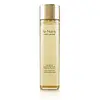What's inside
What's inside
 Key Ingredients
Key Ingredients

 Benefits
Benefits

 Concerns
Concerns

 Ingredients Side-by-side
Ingredients Side-by-side

Water
Skin ConditioningDipropylene Glycol
HumectantPentylene Glycol
Skin ConditioningGlycerin
HumectantButylene Glycol
HumectantBis-PEG-18 Methyl Ether Dimethyl Silane
EmollientArginine
MaskingJojoba Wax PEG-120 Esters
Dimethicone PEG-8 Meadowfoamate
EmollientPPG-26-Buteth-26
Skin ConditioningPEG-40 Hydrogenated Castor Oil
EmulsifyingCaprylyl Glycol
EmollientPhenoxyethanol
PreservativePEG-32
HumectantBiosaccharide Gum-1
HumectantAstaxanthin
Skin ConditioningSodium Hyaluronate
HumectantDisodium EDTA
Carbomer
Emulsion StabilisingLactobacillus/Punica Granatum Fruit Ferment Extract
Skin ConditioningLonicera Caprifolium Flower Extract
PerfumingAscorbyl Glucoside
AntioxidantBeta-Glucan
Skin ConditioningDipotassium Glycyrrhizate
HumectantGlycine Soja Oil
EmollientPvm/Ma Copolymer
Emulsion StabilisingPolyglyceryl-10 Oleate
Skin ConditioningAcrylates/C10-30 Alkyl Acrylate Crosspolymer
Emulsion StabilisingLavandula Angustifolia Oil
MaskingTocopherol
AntioxidantAlteromonas Ferment Extract
Skin ConditioningLysolecithin
EmulsifyingZiziphus Jujuba Fruit Extract
Skin ConditioningHaematococcus Pluvialis Extract
AntioxidantPolyglyceryl-10 Stearate
Skin ConditioningCyclopentasiloxane
EmollientPEG-11 Methyl Ether Dimethicone
EmulsifyingSodium Polyacrylate
AbsorbentCaprylic/Capric Triglyceride
MaskingGlycyrrhiza Glabra Root Extract
BleachingDaucus Carota Sativa Root Extract
Skin ConditioningBeta-Carotene
Skin ConditioningCamellia Sinensis Leaf Extract
AntimicrobialHalidrys Siliquosa Extract
Skin ConditioningWater, Dipropylene Glycol, Pentylene Glycol, Glycerin, Butylene Glycol, Bis-PEG-18 Methyl Ether Dimethyl Silane, Arginine, Jojoba Wax PEG-120 Esters, Dimethicone PEG-8 Meadowfoamate, PPG-26-Buteth-26, PEG-40 Hydrogenated Castor Oil, Caprylyl Glycol, Phenoxyethanol, PEG-32, Biosaccharide Gum-1, Astaxanthin, Sodium Hyaluronate, Disodium EDTA, Carbomer, Lactobacillus/Punica Granatum Fruit Ferment Extract, Lonicera Caprifolium Flower Extract, Ascorbyl Glucoside, Beta-Glucan, Dipotassium Glycyrrhizate, Glycine Soja Oil, Pvm/Ma Copolymer, Polyglyceryl-10 Oleate, Acrylates/C10-30 Alkyl Acrylate Crosspolymer, Lavandula Angustifolia Oil, Tocopherol, Alteromonas Ferment Extract, Lysolecithin, Ziziphus Jujuba Fruit Extract, Haematococcus Pluvialis Extract, Polyglyceryl-10 Stearate, Cyclopentasiloxane, PEG-11 Methyl Ether Dimethicone, Sodium Polyacrylate, Caprylic/Capric Triglyceride, Glycyrrhiza Glabra Root Extract, Daucus Carota Sativa Root Extract, Beta-Carotene, Camellia Sinensis Leaf Extract, Halidrys Siliquosa Extract
Water
Skin ConditioningButylene Glycol
HumectantIsopentyldiol
HumectantDiglycerin
HumectantDipropylene Glycol
HumectantGlycerin
HumectantSwertia Chirata Extract
HumectantNarcissus Tazetta Bulb Extract
AstringentLaminaria Digitata Extract
Skin ProtectingPorphyridium Cruentum Extract
Skin ConditioningTocopheryl Acetate
AntioxidantSodium Hyaluronate
HumectantCamellia Sinensis Leaf Extract
AntimicrobialMyrtus Communis Leaf Extract
PerfumingSigesbeckia Orientalis Extract
Skin ConditioningPalmaria Palmata Extract
Skin ProtectingHydrolyzed Rice Extract
Skin ConditioningCucumis Sativus Fruit Extract
EmollientPyrus Malus Fruit Extract
Skin ConditioningScutellaria Baicalensis Root Extract
AstringentPolygonum Cuspidatum Root Extract
AntioxidantHydrolyzed Wheat Protein
Skin ConditioningSaccharomyces Lysate Extract
HumectantLactobacillus Ferment
Skin ConditioningCaffeine
Skin ConditioningCaprylyl Glycol
EmollientAcetyl Hexapeptide-8
HumectantPPG-26-Buteth-26
Skin ConditioningSucrose
HumectantDipotassium Glycyrrhizate
HumectantGold
Cosmetic ColorantSaccharum Officinarum Extract
MoisturisingGlycine Soja Protein
EmulsifyingLactis Proteinum
Skin ConditioningPearl Powder
Acetyl Glucosamine
Skin ConditioningSaccharide Isomerate
HumectantAscorbyl Glucoside
AntioxidantEthylhexylglycerin
Skin ConditioningPotassium Hydroxide
BufferingPPG-6-Decyltetradeceth-30
EmulsifyingPolymethylsilsesquioxane
Citric Acid
BufferingHexylene Glycol
EmulsifyingPEG-40 Hydrogenated Castor Oil
EmulsifyingParfum
MaskingSodium Metabisulfite
AntioxidantSodium Sulfite
PreservativeDisodium EDTA
Sodium Citrate
BufferingPotassium Sorbate
PreservativePhenoxyethanol
PreservativeWater, Butylene Glycol, Isopentyldiol, Diglycerin, Dipropylene Glycol, Glycerin, Swertia Chirata Extract, Narcissus Tazetta Bulb Extract, Laminaria Digitata Extract, Porphyridium Cruentum Extract, Tocopheryl Acetate, Sodium Hyaluronate, Camellia Sinensis Leaf Extract, Myrtus Communis Leaf Extract, Sigesbeckia Orientalis Extract, Palmaria Palmata Extract, Hydrolyzed Rice Extract, Cucumis Sativus Fruit Extract, Pyrus Malus Fruit Extract, Scutellaria Baicalensis Root Extract, Polygonum Cuspidatum Root Extract, Hydrolyzed Wheat Protein, Saccharomyces Lysate Extract, Lactobacillus Ferment, Caffeine, Caprylyl Glycol, Acetyl Hexapeptide-8, PPG-26-Buteth-26, Sucrose, Dipotassium Glycyrrhizate, Gold, Saccharum Officinarum Extract, Glycine Soja Protein, Lactis Proteinum, Pearl Powder, Acetyl Glucosamine, Saccharide Isomerate, Ascorbyl Glucoside, Ethylhexylglycerin, Potassium Hydroxide, PPG-6-Decyltetradeceth-30, Polymethylsilsesquioxane, Citric Acid, Hexylene Glycol, PEG-40 Hydrogenated Castor Oil, Parfum, Sodium Metabisulfite, Sodium Sulfite, Disodium EDTA, Sodium Citrate, Potassium Sorbate, Phenoxyethanol
Ingredients Explained
These ingredients are found in both products.
Ingredients higher up in an ingredient list are typically present in a larger amount.
Ascorbyl Glucoside is a stable form of Vitamin C. It is created by combining glucose from starch.
When applied to skin, Ascorbyl Glucoside turns into Ascorbic Acid.
Ascorbyl Glucoside is an antioxidant. Antioxidants help fight free-radicals, or molecules that may damage skin cells.
It can help to reduce redness, improve skin texture, reduce the effects of aging, reduce the visibility of dark spots, and brighten skin.
Read more about other types of Vitamin C:
Learn more about Ascorbyl GlucosideButylene Glycol (or BG) is used within cosmetic products for a few different reasons:
Overall, Butylene Glycol is a safe and well-rounded ingredient that works well with other ingredients.
Though this ingredient works well with most skin types, some people with sensitive skin may experience a reaction such as allergic rashes, closed comedones, or itchiness.
Learn more about Butylene GlycolCamellia Sinensis Leaf Extract is derived from the leaves of the tea plant. Black tea, green tea, and oolong tea are all harvested from this plant.
This ingredient has many skin benefits:
This ingredient contains polyphenols, a strong antioxidant. Antioxidants help fight off molecules that damage skin cells.
On top of that, the antioxidants in green tea neutralize free-radicals from the sun. This gives the skin some extra UV protection, but should not replace sunscreen.
Many components of tea have anti-inflammatory properties.
Polyphenols and L-theanine help soothe the skin and reduce irritation. The caffeine in Camellia Sinensis Leaf Extract helps calm inflamed blood vessels.
Other compounds found in tea include: Vitamin Bs, linoleic acid, magnesium, calcium, iron, and zinc.
Research has shown both drinking Camellia Sinensis Leaf Tea and applying it to the skin can help boost skin elasticity and hydration. Studies also show using tea extract may reduce sebum, or oil, production.
Learn more about Camellia Sinensis Leaf ExtractCaprylyl Glycol is a humectant and emollient, meaning it attracts and preserves moisture.
It is a common ingredient in many products, especially those designed to hydrate skin. The primary benefits are retaining moisture, skin softening, and promoting a healthy skin barrier.
Though Caprylyl Glycol is an alcohol derived from fatty acids, it is not the kind that can dry out skin.
This ingredient is also used as a preservative to extend the life of products. It has slight antimicrobial properties.
Learn more about Caprylyl GlycolDipotassium Glycyrrhizate comes from licorice root.
Extracts of licorice have demonstrated to have antibacterial, anti‐inflammatory, antiviral, antioxidant properties.
One component, glabridin, has extra potent antioxidant and soothing properties. It has also been found to block pigmentation from UVB rays in guinea pigs.
Licorice Root also contains a flavonoid. Flavonoids are a natural substance from in plants. Flavonoids also have antioxidant properties.
Another component, glycyrrhizin, has been found to have anti-inflammatory and antimicrobial benefits. This may make licorice root extract effective at treating acne. However, more research is needed to support this.
Liquiritin is one of the flavone compounds found in licorice. It has been found to help lighten skin by preventing tyrosinase from reacting with tyrosine. When the two react, protein is converted to melanin. Melanin is the substance in your body that gives your features pigmentation.
Licorice root is native to Southern Europe and Asia. It has been used in traditional Chinese medicine to help with respiratory issues.
Learn more about Dipotassium GlycyrrhizateDipropylene Glycol is a synthetically created humectant, stabilizer, and solvent.
This ingredient helps:
Dipropylene glycol is technically an alcohol, but it belongs to the glycol family (often considered part of the ‘good’ alcohols). This means it is hydrating and gentle on skin unlike drying solvent alcohols like denatured alcohol.
As a masking agent, Dipropylene Glycol can be used to cover the smell of other ingredients. However, it does not have a scent.
Studies show Dipropylene Glycol is considered safe to use in skincare.
Learn more about Dipropylene GlycolDisodium EDTA plays a role in making products more stable by aiding other preservatives.
It is a chelating agent, meaning it neutralizes metal ions that may be found in a product.
Disodium EDTA is a salt of edetic acid and is found to be safe in cosmetic ingredients.
Learn more about Disodium EDTAGlycerin is already naturally found in your skin. It helps moisturize and protect your skin.
A study from 2016 found glycerin to be more effective as a humectant than AHAs and hyaluronic acid.
As a humectant, it helps the skin stay hydrated by pulling moisture to your skin. The low molecular weight of glycerin allows it to pull moisture into the deeper layers of your skin.
Hydrated skin improves your skin barrier; Your skin barrier helps protect against irritants and bacteria.
Glycerin has also been found to have antimicrobial and antiviral properties. Due to these properties, glycerin is often used in wound and burn treatments.
In cosmetics, glycerin is usually derived from plants such as soybean or palm. However, it can also be sourced from animals, such as tallow or animal fat.
This ingredient is organic, colorless, odorless, and non-toxic.
Glycerin is the name for this ingredient in American English. British English uses Glycerol/Glycerine.
Learn more about GlycerinPeg-40 Hydrogenated Castor Oil is derived from castor oil and polyethylene glycol (PEG). It is used as a emollient and emulsifier.
As an emulsifier, it helps prevent ingredients from separating. It also helps make the other ingredients more soluble; it is often used to solubilize fragrances. This increases spreadability and elongates shelf life in a product.
Emollients help soothe and soften the skin. They do this by creating a protective film on your skin. This barrier helps trap moisture and keeps your skin hydrated. Emollients may be effective at treating dry or itchy skin.
This ingredient may or may not be vegan, depending on the source.
Peg-40 Hydrogenated Castor Oil may not be fungal-acne safe. We recommend speaking with a professional if you have any questions or concerns.
Learn more about PEG-40 Hydrogenated Castor OilPhenoxyethanol is a preservative that has germicide, antimicrobial, and aromatic properties. Studies show that phenoxyethanol can prevent microbial growth. By itself, it has a scent that is similar to that of a rose.
It's often used in formulations along with Caprylyl Glycol to preserve the shelf life of products.
We don't have a description for PPG-26-Buteth-26 yet.
Sodium Hyaluronate is hyaluronic acid's salt form. It is commonly derived from the sodium salt of hyaluronic acid.
Like hyaluronic acid, it is great at holding water and acts as a humectant. This makes it a great skin hydrating ingredient.
Sodium Hyaluronate is naturally occurring in our bodies and is mostly found in eye fluid and joints.
These are some other common types of Hyaluronic Acid:
Learn more about Sodium HyaluronateWater. It's the most common cosmetic ingredient of all. You'll usually see it at the top of ingredient lists, meaning that it makes up the largest part of the product.
So why is it so popular? Water most often acts as a solvent - this means that it helps dissolve other ingredients into the formulation.
You'll also recognize water as that liquid we all need to stay alive. If you see this, drink a glass of water. Stay hydrated!
Learn more about Water